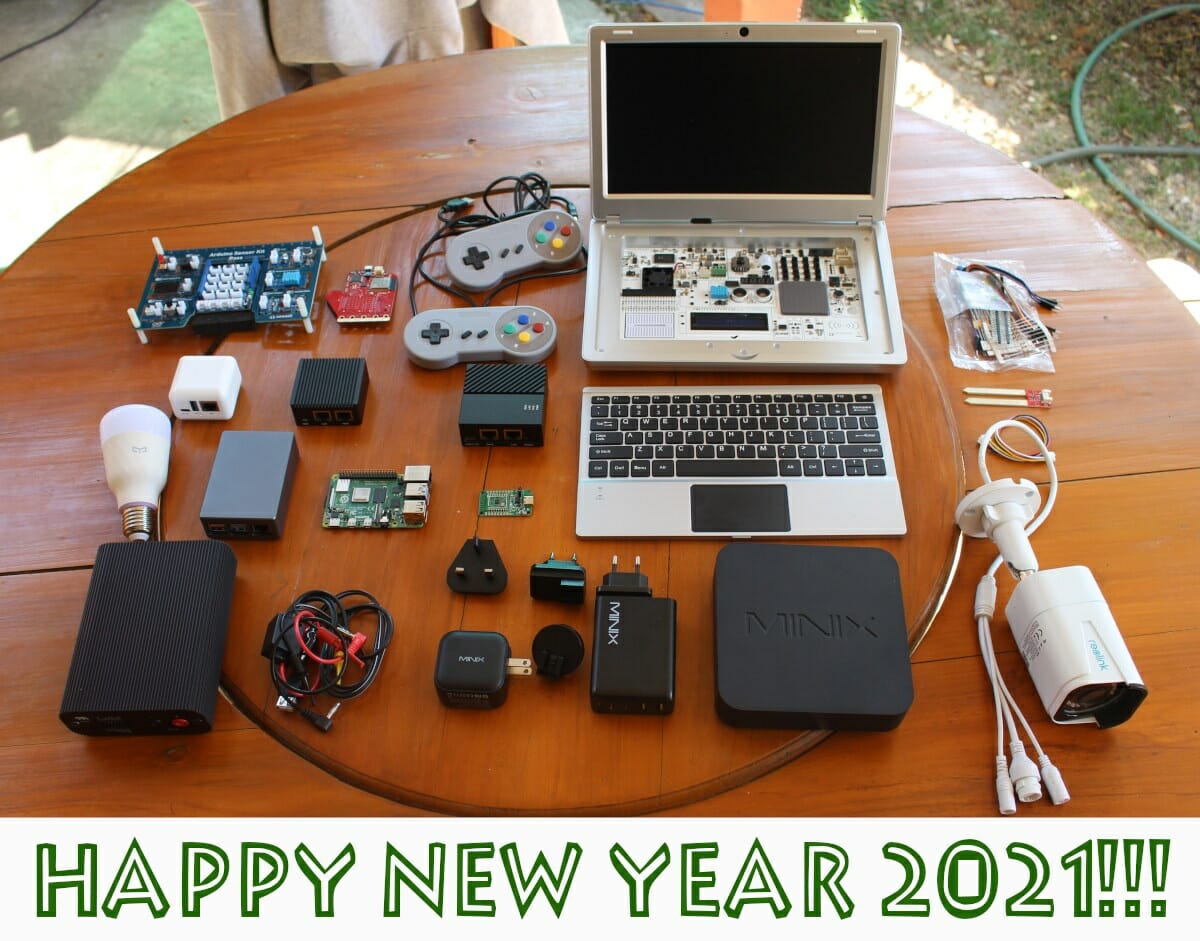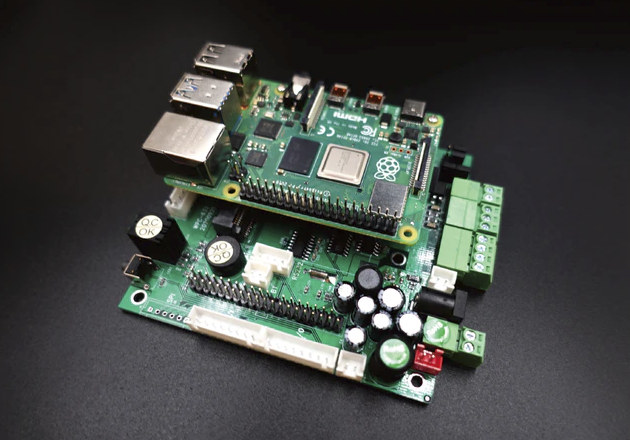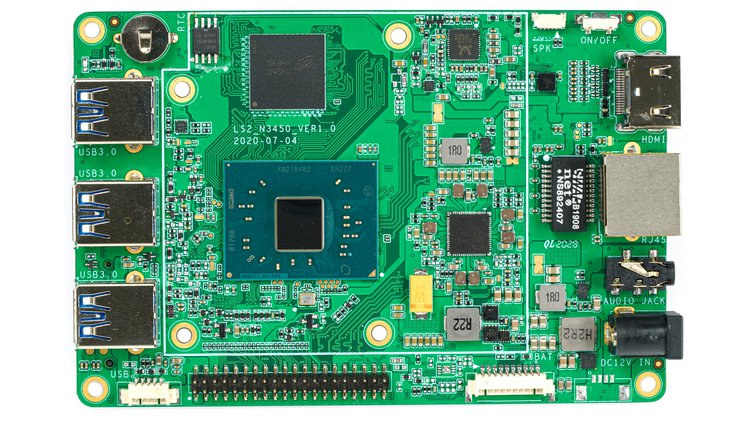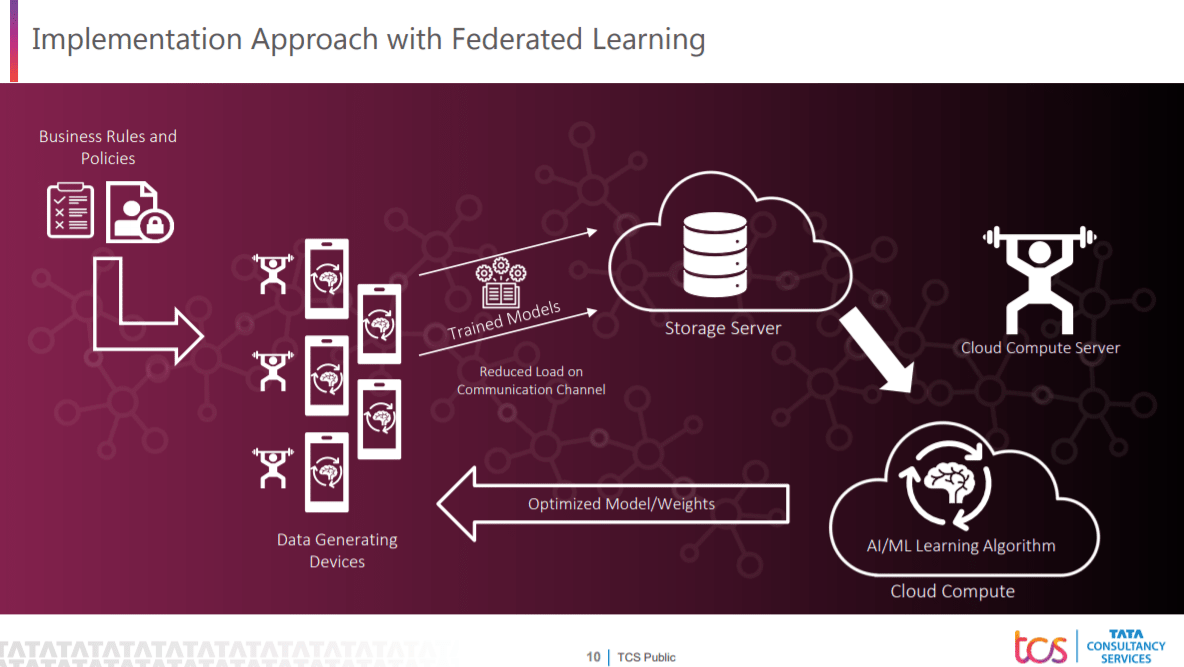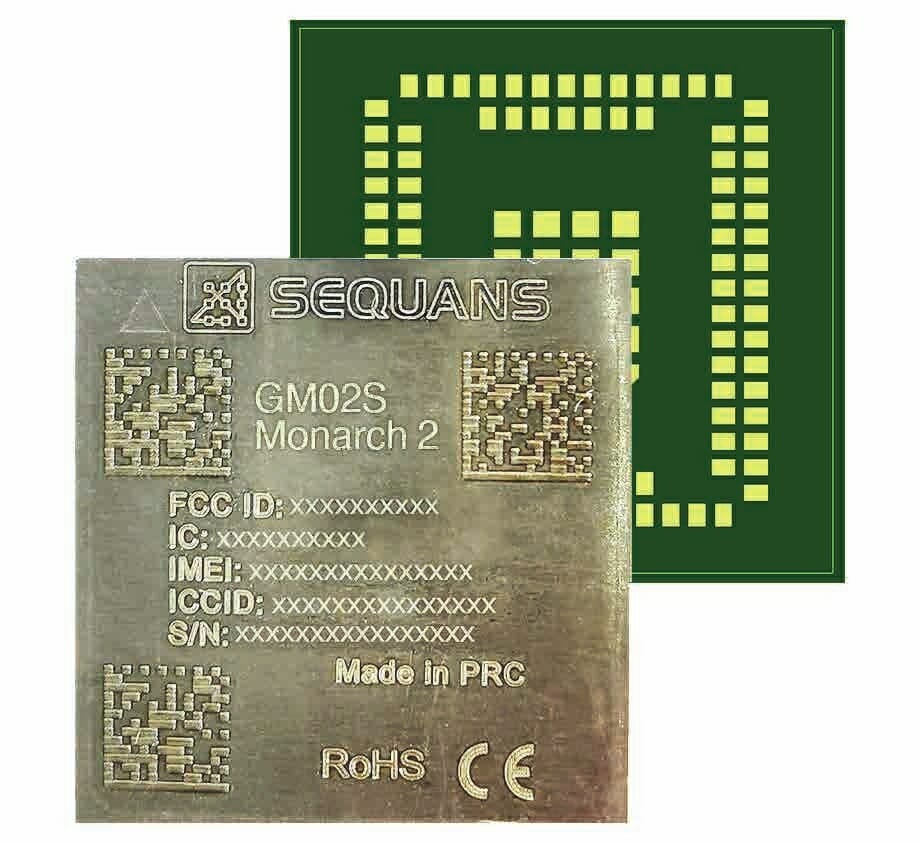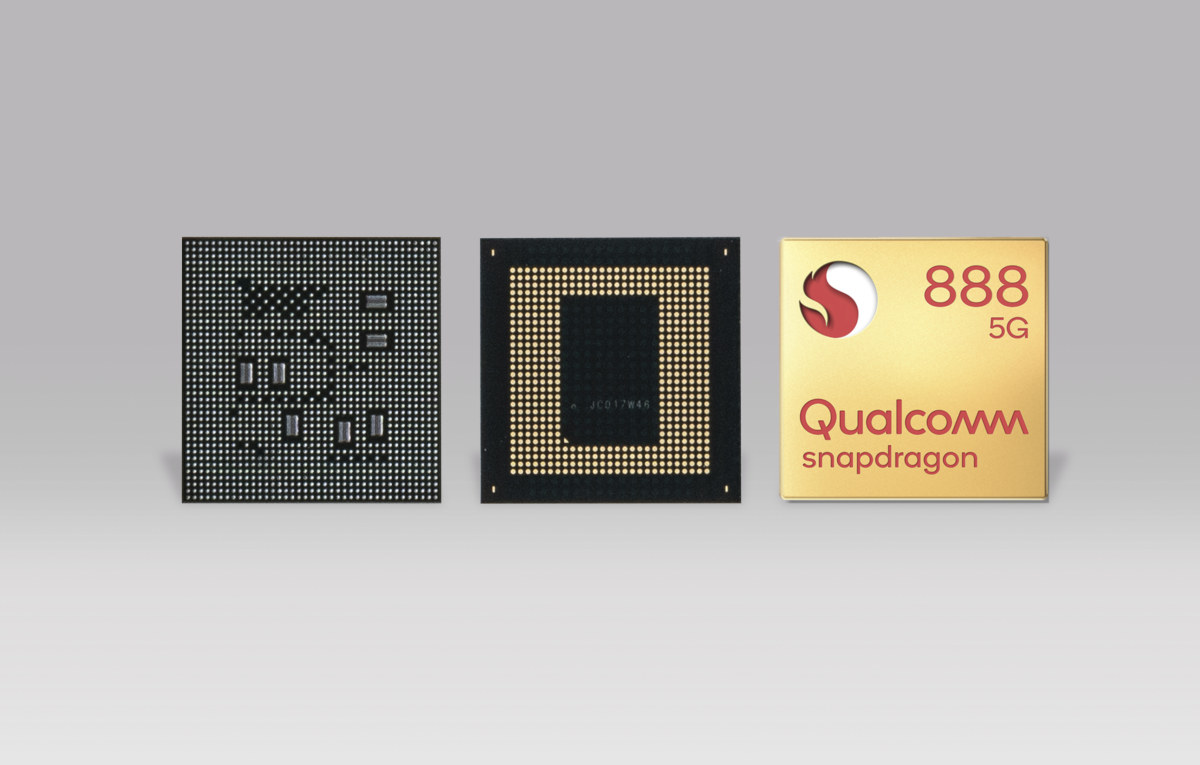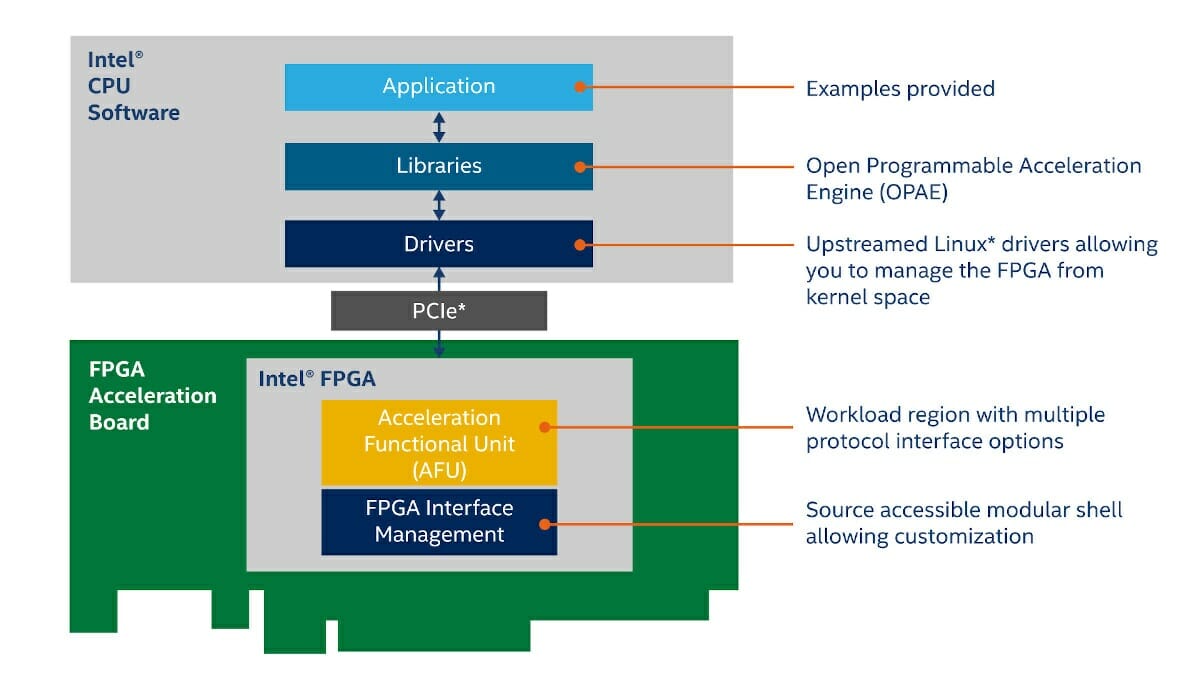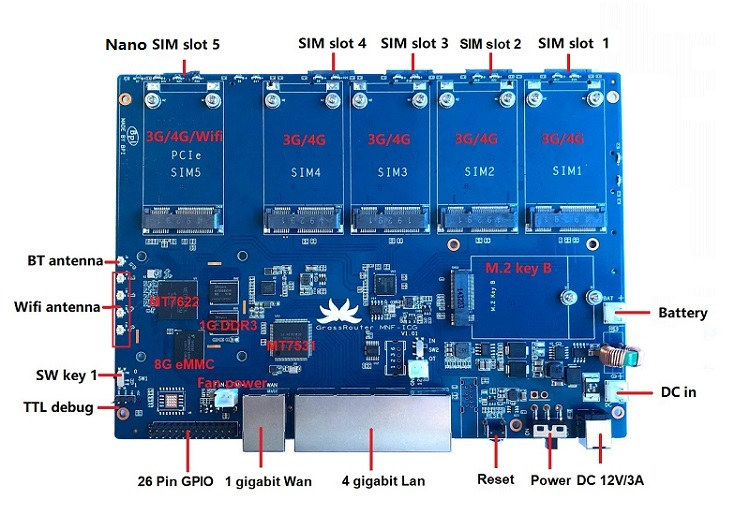It’s this time of the year when we look back at what happened, and what may be next. 2020 did not pan out as planned in more ways than one, but there were still some interesting developments. Based on 2019 announcements, 2020 was promising to be an exciting year for Amlogic and Rockchip with the expected launch of RK3588 and S908X high-end processors for 8K capable devices, but we’ll have to wait for 2021 for this to happen. Instead, the most interesting processor of the year from the Allwinner, Amlogic, and Rockchip offerings was probably Amlogic S905X4 processing adding AV1 hardware decoding. As pointed out in our “RISC-V 2020 highlights” post, it was a fairly eventful year for RISC-V architecture, although there’s still a long road ahead, especially for application processors. We had seen some general-purpose and Bluetooth RISC-V MCUs in 2019, but 2020 saw the launch of the first […]
Industrial 5G/4G Base Shield supports Raspberry Pi, Jetson Nano, other SBC’s (Crowdfunding)
Akari, a start-up based in Japan, has designed an industrial base shield for Raspberry Pi 4/3/Zero, Jetson Nano, Rock Pi 4, and other compatible single board computers. The board allows users to create industrial gateways integrating wireless modules (5G, 4G LTE, WiFi 6 and/or LoRa), a neural compute stick, relay module, and digital inputs, RS232/RS422/RS485, and more. Industrial 4G/5G Base Shield specifications: Compatible SBCs – Raspberry Pi 4, Raspberry Pi 3, Raspberry Pi Zero, Jetson Nano, Rock Pi 4, UP Board, and probably other SBCs with a similar form factor I/Os Build-in relay module and digital input (also reserve dry contacts and wet contacts) Digital input / digital output RS232, RS485, RS422 Internal headers USB host port for connection with Raspberry Pi Expansion M.2 socket for 5G Mini PCIe socket for 4G LTE, WiFI6, or LoRa SIM card socket Internal bay for Intel Neural Compute Stick Misc – RTC module […]
Hackboard 2 Intel Celeron N4020 SBC comes with optional 4G/5G cellular modem (crowdfunding)
We’ve seen several x86 SBCs made for the makers’ community including AAEON Up Board family, AMD powered UDOO BOLT boards, and Seeed Studio Odyssey-X864105 SBC and mini PC. Hackboard 2 is another one of those single board computers. Powered by a dual-core Intel Celeron N4020 Gemini Lake Refresh processor coupled with 4GB DDR4 RAM and 64GB eMMC flash, the board offers the usual HDMI, Ethernet, USB ports, plus a 40-pin Raspberry Pi header, and an optional 4G or 5G modem. Hackboard 2 specifications: SoC – Intel Celeron N4020 dual-core Gemini Lake Refresh processor @ 1.1 GHz / 2.8 GHz (Turbo) with 4MB cache, Intel UHD graphics 600; 6W TDP System Memory – 4GB DDR4 RAM Storage – 64 GB onboard eMMC flash, 2x NVMe M.2 slots for up to 4 TB additional storage Video output HDMI 2.0a output up to 4K 30-pin eDP connector for 11.6″ to 15.6″ displays 6-pin […]
What is Federated Learning in 5G C-V2X?
In the past, Bluetooth, Wi-Fi, 3G, 4G with onboard sensors and GPS gave a huge start to the partial or conditional automation of the vehicles. In today’s era of 4G/5G C-V2X (Cellular vehicle-to-everything) with onboard compute and sensors have pushed the connectivity evolution in the automotive industry. Work has increased on high-automation and fully autonomous vehicles. This is all possible due to wireless communication which is 5G. 5G brings high bandwidth, ultra-low latency, and high reliability to the board. With these promises, it becomes very evident that these technologies, specifically with 5G that can be leveraged in vehicles. The technology is not just to connect vehicles, but also tries to see if a vehicle can connect to a network to get some information from the cloud servers. For the use case of vehicles platooning, we can expect a latency of 10 ms with 99.99% reliability and a high data rate […]
Sequans Monarch 2 GM02S LTE IoT module is “5G-ready” for “Massive IoT”
A couple of days ago, Sequans published a press release announcing the availability of Monarch 2 GM02S “5G-ready” LTE-M/NB-IoT module with power consumption further reduced by 60 percent, featuring an GSMA-compliant integrated SIM (ieUICC), and designed for “Massive IoT” applications. Wait… What is “Massive IoT”? Ericsson explains: Massive IoT refers to applications that are less latency sensitive and have relatively low throughput requirements, but require a huge volume of low-cost, low-energy consumption devices on a network with excellent coverage. The growing popularity of IoT use cases in domains that rely on connectivity spanning large areas, and are able to handle a huge number of connections, is driving the demand for massive IoT technologies. I see… That’s what I used to call LPWAN (Low-power wide-area network) applications, but for sure “Massive IoT” sounds much more cool. Monarch 2 GM02S Let’s go back to the module with Sequans Monarch 2 GM02S key […]
Qualcomm Snapdragon 888 specifications – Cortex-X1/A78/A55 Processor with Snapdragon X60 5G Modem
Qualcomm teased us with Snapdragon 888 5G mobile platform on the first day of the Snapdragon Tech Summit 2020 before revealing the specifications and more details about their new premium mobile SoC on the second day of the event. Snapdragon 888 (SM8350) octa-core processor is equipped with one high-performance Cortex-X1 core @ 2.84 GHz, three Cortex-A78 cores @ 2.42 GHz, and four low-power Cortex-A55 cores clocked at 1.80 GHz, an Adreno 660 GPU, and a third-generation Snapdragon X60 5G modem. Snapdragon 888 specifications: CPU – Octa-core Qualcomm Kryo 680 CPU with 1x Cortex-X1 core @ 2.84 GHz, 3x Cortex-A78 cores @ 2.42 GHz, and 4x Cortex-A55 cores @ 1.80 GHz (via Anandtech) GPU – Adreno 660 GPU with support for OpenCL 2.0 FP, OpenGL ES 3.2, Vulkan 1.1, DX12, and up to 8K 360 VR video playback DSP – Hexagon 780 processor with Vector eXtensions (HVX), Tensor Accelerator Qualcomm Sensing […]
Intel unveils eASIC N5X Structured ASIC, and the Open FPGA Stack
Intel’s virtual FPGA Technology Day 2020 is taking place today, and the company made two announcements before the event. First, the company introduced the new Intel eASIC N5X structured eASIC family with an Intel FPGA compatible hard processor system to design to quickly create applications across 5G, artificial intelligence, cloud, and edge workloads. In addition, Intel also announced the Intel Open FPGA Stack (aka Intel OFS), a scalable, open-source (intel calls it “source-accessible”) hardware and software infrastructure available through git repositories design to ease the work of hardware, software, and application developers. Intel eASIC N5X eASIC N5X is the first structure ASIC from the company to integrate an Intel FPGA compatible Quad-core Armv8 hard processor system. The new chips will help customers bring custom solutions faster to market compared to traditional ASICs thanks to the FPGA fabric, and at a cheaper cost and with up to 50% lower core power […]
Cellular gateway board takes up to five 4G mini PCIe cards, one 5G M.2 module, seven SIM cards
One Banana Pi customer asked them to customize Banana Pi BPI-R64 Linux router board based on MediaTek MT7622 WiFi processor as part of their “BPI 4.0 server” OEM/ODM customization service. Specifically, they were asked to design a cellular gateway board with the same five Gigabit Ethernet ports as on the original board, but adding five mini PCIe sockets and SIM card slots for 3G/4G cards, and one M.2 socket plus two SIM cards for a 5G module. Here’s the result! Banana Pi “GrassRouter” cellular gateway board specifications: SoC – MediaTek MT7622E dual-core ARM Cortex-A53 processor @ 1.35GHz System Memory – 1 or 2GB RAM Storage – 8GB eMMC flash, MicroSD card slot Connectivity Cellular 1x 5G via M.2 Key-B module (USB 3.0 or PCIe bus), 2x SIM card slots. Up to 5x 3G/4G LTE via mPCIe expansion socket, 5x SIM card slots Ethernet – 5x Gigabit Ethernet ports (4x LAN […]


